The dawn symbolizes self-denial and the chastity that corresponds to a priest. It also reminds him that he must do good deeds throughout his life. Today, while the alb is placed, the priest prays the following prayer : "Purify me, Lord, and cleanse my heart, so that purified with the blood of the lamb, I can enjoy eternal joys."
The liturgical albs can be used with a cincture at the waist and with a mitten on the neck. Like all liturgical garments, the liturgical alb presents a marked symbology that, in its case, is that of the purity of the soul after baptism.
On the other hand, the scope that is used with it provides the symbolism of prudence in words and defense against temptations. Likewise, the girdle symbolizes chastity.
The liturgical albs are called differently when they are carried by some or other ministers of the Church. In this way we find priestly albs, diaconal albs, albs for altar boys, albs for acolytes...
The dawn has been known by many names such as line or tunic line, for the material of which it is made; poderis, tunica talaris, or simply talaris, due to the fact that it must reach the feet, camisia, due to the resemblance of the garment to a shirt, etc.
The origin of this liturgical ornament is not clear. Some sources this garment dates back to vestments of the Jewish priesthood. Other texts, the origin of the dawn would be related to the ordinary attire used by both Romans and Greeks.
The time in which the white talar tunic began to be used for liturgical celebrations is difficult to determine. The use of this type of garment, very common in the early years of Christianity, and the absence of adequate documentation, do not allow us to determine when it became the exclusive use of church ministers.
Before the IX, the alb had already become a fundamental part of the priest's liturgical dress. Rabano Maura, who writes "De Clericorum Institutione" in 818 where the alb or talar tunic is described as a white linen garment symbol of self-denial and chastity corresponding to the priest.
In the twelfth century, the alb was the clothing that all priests wore when they performed their religious duties. The use of alba has evolved over the years. Currently it is a garment that parish priests use almost exclusively to officiate at Mass . Its use has spread to all celebrations throughout the Liturgical Year: Advent, Christmas, Easter, etc...
The characteristics of the dawn have hardly changed throughout history.
During the Middle Ages they were made adjusted to the priest's waist, increasing the diameter as it approached the ankles. With the passing of the centuries and the fashion of looser garments, the diameter of the alb increased to the dimensions that we currently know.
The ornamentation of the dawn has historically varied remarkably.
In the early years of Christianity, the alb was adorned with a border around the bottom edge, wrists, and opening of the head.
During the Middle Ages, many parish priests began to use albs with brocades, or embroidery , on the bottom of the alb and on the wrists. This type of decoration was common until the arrival of albs with lace and/or hemstitch . At present, the use of all this ornamentation has been left to the parish priest's judgment, with albs without any type of decoration and albs decorated with embroidery, lace, brocade or hemstitch.
Sale of liturgical albs and altar boy robes in Religious Articles Brabander.
Liturgical albs are religious vestments that can be used by any minister present at the liturgical celebration, from the president, to altar servers, through altar servers and deacons.
The alb is a religious talar tunic , that is, it reaches the heels. It is a white garment with long sleeves and generally very wide with which the priest covers the entire body.
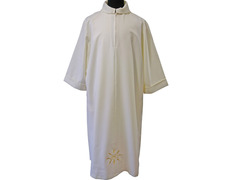
Ref: 52B179BG
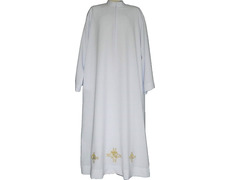
Ref: 84FA3B
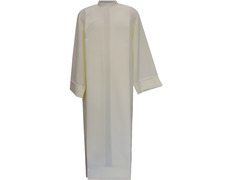
Ref: 52F405

Ref: 52F443

Ref: 52F401

Ref: 52R435
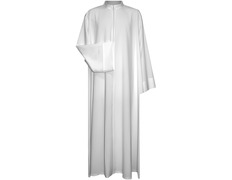
Ref: 52R435

Ref: 52F188

Ref: 52F179
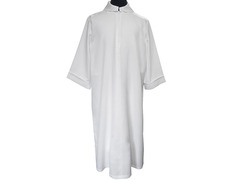
Ref: 52F179
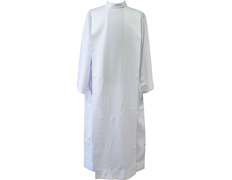
Ref: 84BA3S
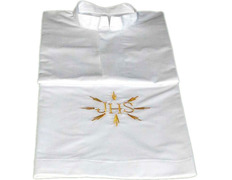
Ref: 1F3001
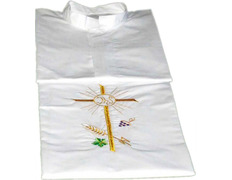
Ref: 1F3003
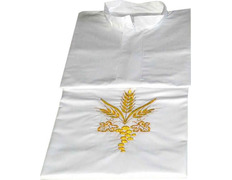
Ref: 1F3000
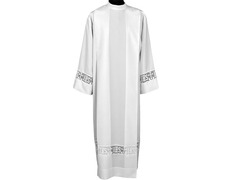
Ref: 84FA43
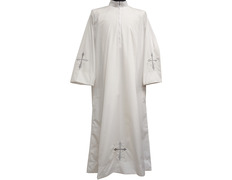
Ref: 56F821

Ref: 52F417
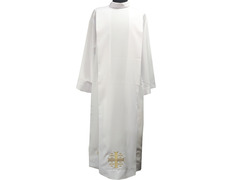
Ref: 84BA1B3

Ref: 52F189

Ref: 52F429

Ref: 52F434

Ref: 52F447

Ref: 84B020101
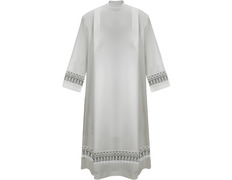
Ref: 84B020101